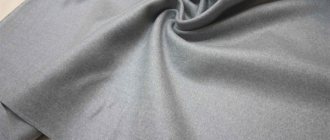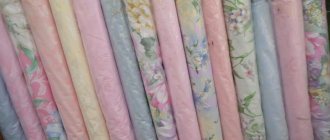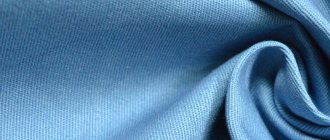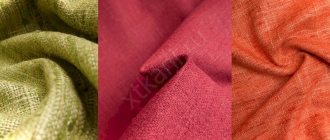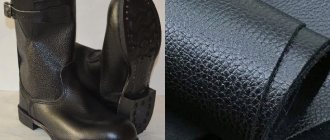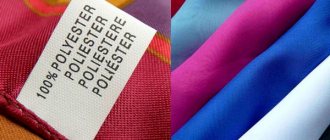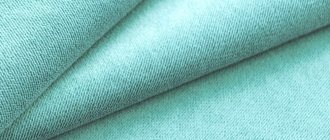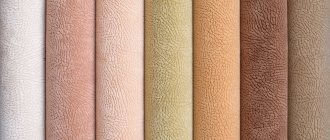Heat-resistant polymers containing high molecular weight synthetic compounds of the amide group (CO-NH or CO-NH2) are called polyamides. The amide bond in the macromolecules of these polymers is repeated from two to ten times.
All polyamides are rigid materials. They have increased strength due to crystallization. Their density varies from 1.01 to 1.235 g/cm³. The surface of polyamide materials is smooth, resistant to fading and changing shape.
They are excellently painted with any dyes and are resistant to many chemicals.
Areas of application of polyamide
Polymers are used in various fields.
In the light and textile industries for the manufacture of:
- synthetic (nylon, nylon) and mixed fabrics;
- carpets and rugs;
- artificial fur and various types of yarn;
- socks and stockings.
In rubber production:
- for creating cord threads and fabrics;
- ropes and filters;
- conveyor belts and fishing nets.
In construction:
- for the production of various fittings and pipes;
- as antiseptic coatings for concrete, ceramic and wooden surfaces;
- to protect metal products from rust.
In mechanical engineering, aircraft and shipbuilding for the manufacture of parts for shock-absorbing mechanisms, rollers and bushings, various devices, etc.
They are found in adhesives and varnishes.
They are used in the food industry for the manufacture of individual equipment parts that come into contact with products.
In the medical industry, artificial veins and arteries are created from them, and various types of prostheses are made. Surgeons use polyamide threads to apply sutures during surgery.
A little history
Polyamides were first synthesized in America back in 1862 from petroleum products. It was poly-c-benzamide. And thirty years later, American scientists synthesized another variety - poly-e-capramide.
But the production of synthetic polyamide products was organized only in the late 30s of the last century. These were the fibers from which nylon and nylon fabrics . In our country, the production of polyamide fibers began after the Great Patriotic War, in 1948.
Brands produced by industry
At the present stage, the chemical industry produces several types of polyamides. The largest group is represented by aliphatic polyamides. They are divided into the following groups: Crystallizing homopolymers:
- polyamide 6 (PA 6), known as caprolon;
- polyamide 66 (PA6.6) or polyhexamethylenadinamide;
- polyamide 610 (PA 6.10) whose name is polyhexamethylene sebacinamide;
- polyamide 612 (RA 6.12);
- polyamide 11 (PA11) - polyundecanamide;
- polyamide 12 (PA12) - polydodecanamide;
- polyamide 46 (RPA46) and polyamide 69 (PA69).
Crystallizing copolymers:
- polyamide 6/66 (PA6.66) or PA 6/66;
- polyamide 6/66/10 (RA 6/66/10);
- thermoplastic polyamide elastomer (polyetherblockamide) - TPA (TPE-A) or REVA.
Amorphous
- polyamide MASM 12 (RA MASM12);
- polyamide RASM (RA RASM 12).
The second, no less common group is aromatic and semi-aromatic polyamides (PAA). They are divided into:
Crystallizing:
- polyphthalamides (synthesized from isophthalic and terephthalic acids), labeled: PA 6T; PA 6I/6T and PA 6T/6I; PA 66/6T and PA 6T/66; PA 9T HTN;
- polyamide MXD6 (PA MXD6).
Amorphous
- polyamide 6-3T (PA 63T; PA NDT/INDT).
Another group of polyamides is glass-filled. They belong to composite materials (modified polyamides), in which glass beads or structured threads are added to the resin. Common brands of glass-filled polyamides: RA 6 SV-30; RA6 12-KS; RA 6 210-KS; RA 6 211-DS, where
- SV - glass fiber, 30 - its percentage;
- KS - granule length less than 5 mm;
- DS - granule length from 5 mm to 7.5 mm.
The following are also used as modifiers:
- talc (deformation marks);
- molybdenum disulfate (increases wear resistance and reduces friction);
- graphite.
Trade organizations offer polyamides under various commercial names: nylon, Ultramid, Ultralon, Zutel, Duerthan, Sustamid, Akulon, Ertalon, Tekamid, Tekast, etc. But they all represent the brands listed above. For example, Tecamid 66 is Polyamide 66.
Polyamide
Polyamide has properties in accordance with the wide variety of its types. The strength of PA is high, and all grades are quite tough. For example, glass-filled polyamide, in addition to high strength, is resistant to petrol and oil.
The density of polyamide is 1.15-1.16 g/cm3, it depends on its nature, as well as on the degree of crystallinity. In Russia, polyamide sheets, which are most often produced from the Polyamide-6 brand, are very popular. Recycled polyamide is used for non-responsible products; most often the popular brands PA6-12 and PA6-21 are recycled.
Some polyamides are painted with Polycryl Enamal LE PVC without primers, others need to be tested with our two primers for complex plastics: Enagrund PET 7000 and Enagrund PP 7050.
The polyamide material operates at temperatures from -50 degrees, and its operating temperature reaches +100 degrees. In addition to resistance to high temperatures, block polyamide, for example, has high resistance to exposure to radioactive waves. Processing polyamide usually does not pose any particular difficulty for enterprises.
1. Polyamides (PA)
- a group of plastics produced by industry under the trademarks: “nylon”, “nylon”, “anid”, etc. Polyamides are used for the production of products by all methods of plastic processing. Most often - injection molding to produce structural parts and extrusion to produce films, pipes, rods and other profiles. In addition, PA is widely used in the textile industry for the production of fibers, threads, yarns, fabrics, etc. Currently, secondary PA, which is offered by various compound manufacturers, plays an increasingly significant role in the Polyamide market.
The polymer macromolecules contain an amide bond and methylene groups, repeating from 2 to 10 times. Polyamides are crystallizing polymers. The properties of various polyamides are quite similar. They are tough materials with high tensile strength and high wear resistance, have a high softening point and can withstand steam sterilization up to 140°C. Polyamides retain elasticity at low temperatures, so the temperature range of their use is very wide. However, polyamides are distinguished by fairly high water absorption. After drying, the original level of properties is restored. In this regard, PA-12 is better, which has less water absorption than PA-6 and PA-6.6. PAs have high impact and punching strength and are easily welded using the high-frequency method. PA has very high vapor permeability and low permeability to gases, which is why they are used in vacuum packaging. PA is easy to print on. The transparency of PA films is high, especially biaxially oriented ones, and gloss also improves with orientation. The electrical and mechanical properties of the material depend on the ambient humidity. The latest development is the production of amorphous polyamide. It has lower vapor permeability compared to crystalline polyamides.
2. The main brands of Polyamides produced today:
Aliphatic crystallizing (homopolymers and copolymers) PA 6 - Polyamide 6, polycaproamide, nylon. PA 66 - Polyamide 66, polyhexamethylene adipamide. PA 610 - Polyamide 610, polyhexamethylene bacinamid. PA 612 - Polyamide 612. PA 11 - Polyamide 11, polyundecane amide. PA 12 - Polyamide 12, polydodecane amide. PA 46 - Polyamide 46. PA 69 - Polyamide 69. PA 6/66 (PA 6.66) - Polyamide 6/66 (copolymer). PA 6/66/610 - Polyamide 6/66/610 (copolymer) PEBA (TPE-A, TPA) - Thermoplastic polyamide elastomer, polyester blockamide.
Aliphatic amorphous PA MACM 12 - Polyamide MACM 12. PA PACM 12 - Polyamide PACM 12.
Semi-aromatic and aromatic, crystallizing - (PAA) PPA (PA 6T, PA 6T/6I, PA 6I/6T, PA 6T/66, PA 66/6T, PA 9T, HTN) - Polyphthalamides (polyamides based on terephthalic and isophthalic acids) PA MXD6 - Polyamide MXD6.
Semi-aromatic and aromatic, amorphous (PAA) PA 6-3-T (PA 63T, PA NDT/INDT) - Polyamide 6-3-T.
3. Glass-filled Polyamides (Polyamides KS and Polyamides DS)
Glass-filled polyamides refer to composite materials consisting of polyamide resin filled with pieces of glass complex threads.
Advantages: glass-filled polyamides have low density, high strength to impact loads, good oil and gasoline resistance, low coefficient of friction and good dielectric properties.
Application: glass-filled polyamides are processed into products using various methods: simple casting, injection molding, pressing and other methods. Designed for the manufacture of various products for structural, electrical and general purposes.
Glass-filled polyamides are non-toxic and under normal conditions do not have a harmful effect on the human body.
4. Examples of producing polyamides
Polypeptide analogues can be obtained synthetically from w-amino acids, and compounds of this type are found in practical use, starting with the w-aminocaproic acid “polypeptide”. These polypeptides (polyamides) are obtained by heating cyclic lactomes, which form cyclic ketone oxides through Beckmann rearrangement.
From the melt of this polymer of nylon resin, nylon fiber is formed by stretching. In principle, this method is applicable to obtain homologs of nylon. Polyamides can also be obtained by polycondensation of the amino acids themselves (with elimination of water):
Polyamides of this type are used for the manufacture of synthetic fiber, artificial fur, leather and plastic products with great strength and elasticity (such as ivory). Nylon is most widespread due to the availability of raw materials and the presence of a long-developed synthesis route. Entant and Rilsan have the advantage of great strength and lightness.
Glass-filled, heat-stabilized, impact-resistant polyamide composition, resistant to oils and gasoline. PA6-LT-SVU4 is recommended for the manufacture of body parts for electric and pneumatic tools, construction and finishing and other machines operating under conditions of shock loads and vibrations.
5. Technical characteristics of some PA6-LPO-T18
The soap-filled colored plasticized composite material PA6-LPO-T18 is characterized by increased dimensional stability, resistance to deformation, and wear resistance. Recommended for the manufacture of parts for structural, antifriction and electrical purposes that require increased dimensional accuracy. During processing, it ensures low wear of injection molding machines and equipment.
TECHNICAL SPECIFICATIONS
| Impact strength according to Charpy, KJ/m2, not less | 30 |
| Bending temperature under load 'C | |
| - at a stress of 1.8 MPa, | 80 |
| - at a voltage of 0.45 MPa, | 179-200 |
| Tensile strength, MPa, not less | 77 |
| Electric strength, KV/mm, not less | 25,0 |
| Bending stress at a given deflection value, MPa, not less | 90 |
PA66-1A
Structural polyamide PA66-1A is a heat-stabilized polycondensation product of hexamethylenediamide and adipic acid. It is characterized by high strength properties, heat resistance, and deformation stability. Resistant to alkalis, oils, gasoline. Used for the manufacture of parts operating under increased mechanical loads (gears, bearing shells, housings, etc.).
TECHNICAL SPECIFICATIONS
| Melting point, 'C | 254-260 |
| Charpy impact strength, KJ/m2 | |
| - on samples without a cut | does not collapse |
| - on samples with a notch, not less | 7,5 |
| Bending stress at a given deflection value, MPa, not less | 78 |
| Electric strength, kV/mm | 20-25 |
PA66-2
Structural polyamide PA66-2 is a heat-stabilized polycondensation product of hexamethylenediamide and adipic acid. It is characterized by high strength properties, heat resistance, and deformation stability. Resistant to alkalis, oils, gasoline. Used for the manufacture of parts operating under increased mechanical and thermal loads in the electrical industry.
TECHNICAL SPECIFICATIONS
| Melting point, C | 254-260 |
| Charpy impact strength, KJ/m2 | |
| - on samples without a cut | Does not collapse |
| - on samples with a notch, not less | 7,2 |
| Bending stress at a given deflection value, MPa, not less | 81 |
| Electrical strength. KV/mm, not less | 20 |
PA66-1-L-SVZO
PA66-1-L-SVZO is a glass-filled composition based on polyimide resin. Recommended for the manufacture of structural and electrical insulating products used in mechanical engineering, electronics, automotive, instrument making, operating at elevated temperatures.
TECHNICAL SPECIFICATIONS
| Bending stress at failure, MPa, not less | 200 |
| Impact strength according to Charpy, KJ/m2, not less | 40 |
| Bending temperature under load at a stress of 1.8 MPa, 'C, not less | 200 |
| Electrical strength. KV/mm, not less | 20 |
| Specific volumetric electrical resistance, OM cm, not less | 2*10 4 |
Polyamide PA66-LTO-SV30
Polyamide PA66-LTO-SV30 is a heat-stabilized glass-filled composition that is resistant to antifreeze, mineral oils, and gasoline. Has high physical and mechanical properties. Recommended for the manufacture of parts in the automotive industry.
TECHNICAL SPECIFICATIONS
| Impact strength according to Charpy, KJ/m2, not less | |
| - in original condition | 40 |
| - after exposure to antifreeze for 20 hours at a temperature of 150'C | 40 |
| Tensile strength after exposure to ethylene glycol for 72 hours at a temperature of 135 'C, MPa, not less | 50 |
| Bending stress at failure, MPa, not less | 200 |
| Bending temperature under load 1.8 MPa, C, not less | 200 |
| Tensile modulus of elasticity, MPa | 8000-11000 |
Polyamide PA610-L
Polyamide PA610-L is an injection-molded thermoplastic produced by the polycondensation of hexamethylenediamide and sebacic acid. It has high physical, mechanical and electrical insulating properties, increased dimensional stability, and low moisture absorption. The material is oil and petrol resistant. It is used for the manufacture of structural and antifriction parts, precision parts of precision mechanics (fine-module gears, spools, cuffs, etc.). Approved for the manufacture of products in contact with food and toys.
TECHNICAL SPECIFICATIONS
| Charpy impact strength, KJ/m2 | |
| - on samples without a cut | does not collapse |
| - on samples with a notch, not less | 4,9 |
| Bending stress at a given deflection value, MPa, not less | 44,1 |
| Water absorption in 24 hours, %, no more | 0,5 |
| Electric strength, KV/mm, not less | 20 |
PA610-L-SVZO
PA610-L-SVZO is a glass-filled composition based on PA610 polyimide resin. It is characterized by increased strength, heat resistance, wear resistance, and a low coefficient of thermal expansion. The products can operate at temperatures up to 150'C and briefly up to 180'C. Recommended for structural parts operating under conditions of increased loads and temperatures.
TECHNICAL SPECIFICATIONS
| Impact strength according to Charpy, KJ/m2, not less | 29,4 |
| Modulus of elasticity in bending, MPa | 7000-9000 |
| Bending temperature under load under tension | |
| — 1.8 MPa, 'C | 190-200 |
| -0.45 MPa, 'C | 200-205 |
| Electric strength, KV/mm, not less | 25 |
PA610-LPO-T20
The soap-filled colored plasticized composite material PA610-LPO-T20 is characterized by increased dimensional stability, resistance to deformation, and wear resistance. Recommended for the manufacture of parts for structural, antifriction and electrical insulating purposes that require increased dimensional accuracy. During processing, it ensures low wear of injection molding machines and equipment.
TECHNICAL SPECIFICATIONS
| Impact strength according to Charpy, KJ/m2, not less | 30 |
| Modulus of elasticity in bending, MPa | 2000-3000 |
| Water absorption in 24 hours, %, no more | 1 |
| Electrical strength. KV/mm | 20-30 |
| Shrinkage, % | 0,8-1,7 |
Properties of polyamide material grades
The properties of polyamides of different brands are similar to each other. These are materials with increased strength and wear resistance. Synthetic filtered polyamide fabrics can be processed with hot steam (t=140°). At the same time, their elasticity is completely preserved. Parts, fittings and pipes made from polyamides can withstand high shock loads.
The structural thermoplastic Polyamide 6 is a product of anionic polymerization of caprolactam GOST 7850-74E, and is resistant to hydrocarbon products, fuels and lubricants and mechanical damage. Due to this, it is widely in demand in the oil refining industry, the production of automobiles and hand tools. Its disadvantage is its high moisture absorption, which limits its use in the manufacture of parts operating in humid environments. The advantage is that it does not lose its original properties after drying.
Polyamide 66 (Tecamide 66) is distinguished from Polyamide 6 (PA 6) by its greater density. This is a rigid material with increased hardness, strength and good elasticity. It is insoluble in alkalis and other solvents, technical oils, edible fats, fuels and lubricants, and is resistant to x-ray and gamma radiation.
Polyamide 12 has a high degree of slip and wear resistance. It can be used in conditions of ultra-high temperatures and high humidity. Used in the production of shock-absorbing parts, rollers and bushings, buffer strips and rope blocks, worm wheels, augers, etc.
Polyamide 11 differs from all other types in the lowest percentage of water absorption (0.9%), it practically does not age. It can be operated at sub-zero temperatures. The special property of maintaining its shape in a humid environment has made it an indispensable material in the engineering, aircraft and shipbuilding industries. In addition, it is physiologically inert and can be used in equipment for catering establishments. Low hygroscopicity makes Polyamide in demand in electrical engineering and energy as an insulating material. Polyamide 11 is one of the most expensive polymers.
Teamide 46 is a polyamide with a semi-crystalline structure and has the highest melting point (295°C). Used for the manufacture of parts operating at elevated temperatures. Its disadvantage is increased water absorption.
Filling polyamide with glass fiber modifiers improves their properties: they become stiffer, strength and heat resistance increase, and the coefficient of linear expansion decreases, reducing shrinkage. Polyamides become resistant to cracking from frost or elevated temperatures. Glass-filled polyamides are used in instrument making, the production of musical instruments (cases are made from them), in the manufacture of load-bearing parts of transformers, etc.
Video: “Machining of polyamide 6 (caprolon)”
Types of polyamide fabric
Polyamide is a material that can often be found in the production of hosiery. Other fabrics are made from this component. The labels of trousers, T-shirts, and jackets usually indicate that polyamide was used in production.
It is also added to viscose. And adding it to natural fabrics can make things elastic, durable and quick-drying. Due to its varying degrees of smoothness, polyamide is used in almost all types of clothing.
Note! Material prices may vary significantly. For example, nylon will cost 260 rubles* per 1 kg, and grade “6” polyamide will cost 620.
Taslan
Taslan is a high-strength fabric, much stronger than nylon. At the same time, the material is “breathable”. It has a rep structure and is made using impregnations. Taslan is used for sewing children's clothing, for example:
- Jacket.
- Sportswear.
- Tourist suits.
Taslan
Winter jackets made from this fabric are especially popular. Thanks to the impregnations, good air exchange is created, and taslan also reliably retains heat. The material is very light - one meter can weigh a little more than 170 g.
The fabrics from which outerwear is made also have their own markings. For example, 186T is a light thread, and 310T is a thick thread. On the labels of such things you can see the mark “R/S”, which means the presence of additional fibers.
You may be interested in this Differences and properties of polyester, viscose and elastane
There are different impregnations of taslan:
- Milky is a white layer applied to the inside that insulates and allows the item to “breathe.”
- PU - polyurethane layer. If you touch this material, the sensations will be reminiscent of touching skin. Water resistant, markings on products indicate the degree of resistance to moisture.
- WR is also a water resistant layer. After applying it, incoming drops of water are not absorbed, but roll down over the surface.
Nylon
This is the very first fabric made from polyamide. In the last century (around the 50s), nylon was one of the most popular fabrics; women's underwear, socks, and men's shirts were made from it. Things were inexpensive and did not wear out for a long time.
The material is made with the addition of alcohol and water, it is marked with the number “6”. The appearance resembles silk. In addition, the characteristics of nylon are:
- Durability, ability to withstand heavy loads.
- Does not fade or change shape over time.
- The ability not to absorb dust.
- The fabric is quick-drying.
As for breathability, nylon is inferior here. Things made from it do not allow air to pass through well, which can cause allergies.
Nylon is often added to silk and linen, resulting in products that become more stretchy and durable. Its presence in the composition can be found on dresses and blouses, as well as on decorative items: curtains, upholstery.
Despite their resistance to stains, items containing nylon still need to be washed from time to time. But the fabric holds up well to washing. However, it is worth considering that cleaning is carried out at a temperature no higher than +31 degrees.
Nylon
Jordan
Jordan appeared in the 21st century and is considered a new generation synthetic fabric. This fabric can be identified by its shimmer after exposure to light. The fibers are coated with polyurethane, which makes them durable, but the material itself is lightweight and does not allow water to pass through. Good air exchange - the material “breathes” while being waterproof at the same time. Another feature is that Jordan is a fairly warm material. Therefore, they basically make the following from it:
- Tents.
- Jackets.
- Overalls.
- Warm sports suits.
Important! Jordan also withstands frequent washing without losing its properties. The fabric feels soft and pleasant to the touch. Dries quickly after cleaning.
Jordan
Velsoft
Another type of synthetics that has become famous due to its appearance and qualities. Velsoft has a pile on both sides, which is created from the finest fibers (the thickness is a hundred times less than a hair). Thanks to this structure, the fabric is light but durable. Velsoft does not wrinkle, you do not need to iron it every time. It is also resistant to cold air. The material is distinguished according to the following criteria:
- Presence of a drawing.
- Color.
- The nature of the thread structure.
Although the fabric retains heat, it does not allow air to pass through well enough. In addition, velsoft tolerates changes in humidity and temperature well, which is why robes and children's suits are made from it. You can often see blankets made of this material on the shelves.
Velsoft
Anid
The anide is made from adipic acid, a material similar to nylon. Available in the form of monofilament, staple and filament threads. Anid is in high demand; it is used to produce knitwear and sewing threads.
Important! The temperature at which items are processed should not exceed 145 degrees.
Anid
Elastane
Elastane is used almost everywhere. It is used to produce casual wear, sportswear, underwear and stockings, holiday suits and performance outfits. The qualities of this material are the same as those of other polyamides - wear resistance, softness, breathability, moisture resistance.
You might be interested in what microfiber fabric is made of: description of the material in bedding and shoes
Elastane is quite pleasant to the skin and has the ability to not absorb dirt (stains can be easily washed off by hand).
Elastane
Tactel
This fabric is made from polyamide 6-6 and has many positive features. The material is breathable, lightweight, soft and durable. The name is taken from Latin, meaning "touch". Outerwear and socks are made from taktel. However, due to such a number of qualities, the price is quite high.
Tactel can be:
- Glyantsev.
- Matt.
- Textured.
- Sparkling.
The types of this material vary, and this determines where the tactile will be used. For example, sports suits are made from Tactel-textural. The types differ in the thickness of the threads, appearance (shiny or matte) and elasticity. Tactel is also added to natural fabrics.
Tactel
Production technology
The production of polyamides is carried out in two ways:
- polymerization of caprolactam (for poly-e-capramides), which is carried out by converting the cyclic NC bond into a linear polymer;
- a chain reaction of polycondensation of hexamethylenediamine and adipic acid (for poly-c-benzamides), as a result of which polyamide chains are formed.
Both processes can be performed in continuous (the most common) and batch modes.
The continuous technological process of polymerization of caprolactam consists of the following stages:
- Preparatory. At this stage, the AG salt is obtained from adipsic acid and hexamethylenediamine. To do this, adipsic acid is dissolved in methanol in a special apparatus equipped with a stirrer and heating. At the same time, caprolactam powder is melted in a melter equipped with a screw feeder;
- At the second stage, polymerization occurs. This is done as follows: the prepared solution is introduced into the polymerization column. Columns are used in one of three types: L-shaped, vertical or U-shaped. Melted caprolactam also goes there. A neutralization reaction occurs and the solution boils. The resulting vapors enter the heat exchangers;
- At the next stage, the polymer from the column in molten form is extruded into a special die and then sent for cooling. For this purpose, baths with running water or watering drums are provided;
- When cooled, the polymer bundles and ribbons are supplied to the grinding machine by means of rollers or guides;
- At the next stage, the resulting polyamide crumb is washed with hot water and filtered from low-grade impurities;
- The technological process is completed by drying the polyamide crumbs in special vacuum-type dryers.
The continuous technological process of polycondensation (production of poly-c-benzamides) includes steps similar to the polymerization of caprolactam. The difference lies in the methods of processing raw materials.
- the process of obtaining AG salts is the same as during polymerization, but after isolation they crystallize and are fed into the reactor in the form of a powder rather than a solution;
- The polycondensation chain reaction occurs in an autoclave reactor. This is a horizontal cylindrical apparatus with a stirrer;
- polycondensation is carried out in a pure nitrogen environment at t=220°C and P=1.76 MPa. The duration of the process is from one to two hours. Then the pressure is reduced to atmospheric pressure for one hour, after which the reaction is carried out again at P = 1.76 MPa. The full production cycle of this type of polyamide takes place within 8 hours;
- after its completion, the molten polyamide is filtered, cooled and crushed into granules, which are dried with hot air in pneumatic dryers.
Caring for polyamide clothing
Although polyamide has the ability to retain its shape for a long time and not wear out, simple care for things is needed.
- Washing items (both with and without printing) is carried out at a temperature not exceeding 40 degrees in a delicate cycle. If the item is slightly soiled, it is best to wash the product by hand.
- It is not recommended to dry the item in a centrifuge. You need to dry it by hanging it on a rope or on a hanger.
- Typically, items do not need ironing, but if the need arises, the temperature is set to the lowest possible level, otherwise the fabric may “stick” to the iron or be damaged.
Important! Care instructions are also indicated on the labels, so pay attention to them.

